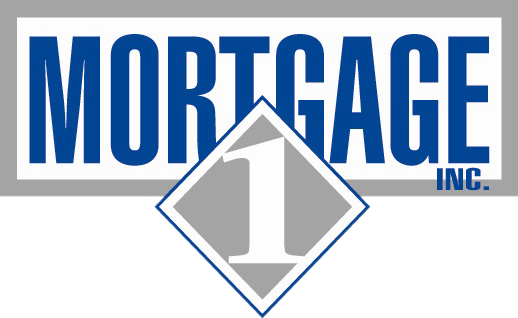
6 tips for buying a home this winter
November 21, 2017
9 Tips for Selling Homes During the Holidays
December 8, 2017Here are 12 steps for people who are dreaming of a new home for the holidays.
#1: Understand Your Numbers
Future home buyers should take the time to write down all of their monthly expenses and add in the expected new mortgage costs. Be sure to include things like utilities and insurance for the new home. Also, consider establishing a small savings account for unexpected repairs. Consumers should focus on spending during a month to get comfortable and get a feel for how the new house payment will fit into the budget.
#2: A Down Payment is Only One part of the Out of Pocket Expense when Purchasing a Home
You may qualify for a no down payment or low down payment mortgages, such as the VA loan or the FHA loan. If so, borrowers can save thousands of dollars at the closing table. However, the down payment is only one piece of the home buying puzzle.
Buyers typically make a down payment when they submit the offer, there is a thing called earnest money deposit. The amount of deposit is usually $1000. If the seller accepts the offer, and the loan is approved, the earnest money is usually applied towards the closing costs.
Service providers are called upon each time a mortgage transaction is completed. The lender, the real estate agent, the home appraiser, the local county courthouse, a homeowner insurance agent and the closing attorney are just some of the individuals involved in the purchase. All of the fees for those services are paid when the loan is closed.
#3: Time to Maximize Credit Scores
Consumers with the highest credit scores will usually get approved for the absolute lowest interest rate mortgages available and for smaller down payment loans.
Look at the following chart for a simple example:
- Scenario Credit Score 620 Credit Score 740
- Loan Amount $225,000 $225,000
- Interest Rate 6.00% 5.00%
- Term (in Months) 360 360
- Monthly Payment Amount $1,349 $1,208
- The 1% change in interest rate is $141 per month.
- The difference over 30 years. $50,760 savings!
In order to get your score as high as possible, follow these simple rules:
- Pay all bills on time, every month before the reporting date.
- Pay down all credit cards to 5-9% of the high credit.
- Do not close any credit cards, or add any new debt.
- Avoid applying for any new credit accounts because it will create an inquiry.
- Do not communicate with any collection companies that are reporting to the repositories.
#4: Check with the state lending authority to find out about any down payment assistance programs.
Many states have down payment assistance programs that 1st-time buyers or even 2nd-time buyers could qualify for. Consumers should be sure to ask their lender about any programs they may qualify for.
#5: Get Pre-Approved for a Mortgage
Talking to a local Mortgage 1 lender and get a pre-approval for a loan before the consumer starts looking for a home is very important. Getting pre-approved will do two things for them.
- It will define the price range for their home purchase
- It will show real estate agents that they are serious about buying and make it easier to negotiate with sellers
Consumers will need to provide income documentation to the lender. Our experienced mortgage lenders will be able to go through credit and income documents. Then determine not only the best type of loan for their situation but explain which mortgage programs will be best for their unique situation.
#6: Choose the Location of Your Home Wisely
The Location of the property is the one thing you cannot change. Morning commutes to school and or work can be a significant part of daily life. If the new location adds 20 or 30 minutes to the commute, that means you are giving up almost an hour every day. There are also things like proximity to family, friends, shopping, and entertainment.
#7: Consider the Ability to Sell the Home in the Future
While consumers may be buying a house now with long-term plans in mind, that does not mean that things won’t change.
Never buy the most expensive, smallest or biggest home in the neighborhood – houses that do not conform to the neighborhood normal the will be the toughest ones to sell, historically speaking.
Also, keep in mind the target audience that would likely be interested in purchasing the home in the future. As long as there are a lot of people that could consider living at in the home, the buyer should be in good shape to sell if their life circumstances change.
#8: Review the Homeowner’s Association Agreement Thoroughly
If buyers are considering a neighborhood that has a Homeowner’s Association Agreement, read the association agreement before buying the property. The degree of homeowners’ association requirements vary, some have guidelines about a wide range of items that cover the colors of the exterior walls, type of roofing material, the things that can or cannot be left in the driveway and other details. Make sure the consumer agrees to these rules.
#9: Read the Purchase Contract Thoroughly Before Signing
Signing a contract to buy a home makes the consumer liable to carry out the home purchase. For this reason alone, it is wise to read over the entire contract. Just as an example, the sellers may require that they remain in the home for a week or 30 days after the loan closes.
Or, the sellers may expressly state that they will make no improvements or repairs to the home before the sale. These things could have an impact on the buyers’ plans for moving.
It is also essential to find out if there are any contingencies in place. Some sellers will place a contingency on the contract. In a hot market, some sellers may add a contingency that they will only sell their home if their agreement to buy their next home is accepted. If the contract on their next home is rejected, then they will not sell their home to the buyer.
#10: Investigate the Demographics of the Area
If you are a young married couple with a small child, then you may feel more comfortable in a neighborhood with other young children. On the other hand, if you are single with no plans to marry, the idea of being surrounded by lots of families and young kids may not be their thing.
#11: Push Emotions Aside During Negotiations
When we want something really bad, it is easy to get caught up in emotions and ignore facts. However, this is precisely the opposite of what should happen. When dealing with the real estate agents and the sellers, make sure to get a fair deal. If things need to be repaired, point that out before signing the contract.
Perhaps the price can be lowered to cover the repair costs, or the sellers can pay for it out of pocket. If the home is overpriced for the area, find out why and see if the sellers will come down on the price.
#12: Determine what is necessary versus what is a want
Most of us want to have the absolute best that we can afford. However, when buying a home, it is easy to claim something is necessary, when it is really just a want. Make a list of things that are absolute must-haves. If buyers have two small kids, then they will likely want a bedroom for each of them. Having an extra bedroom for a “man-cave” is probably a want, not a need.
Have the buyers consider what they dislike about their current place and the things that they actually enjoy. This can be a right starting place for them then come up with a list of items and features that will need at the new place.
Ready to apply? try Mortgage in a SNAP

12 steps toward home ownership




